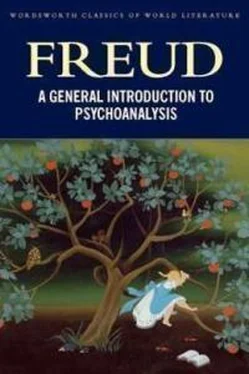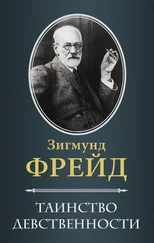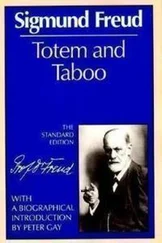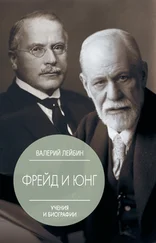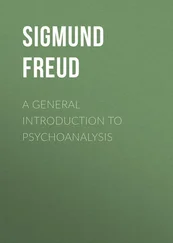We now want to complete our statement concerning the mechanism of healing, by including it within the formulae of the libido theory. The neurotic is incapable both of enjoyment and work; first, because his libido is not directed toward any real object, and second because he must use up a great deal of his former energy to keep his libido suppressed and to arm himself against its attacks. He would become well if there could be an end to the conflict between his ego and his libido, and if his ego could again have the libido at its disposal. The task of therapy, therefore, consists of freeing the libido from its present bonds, which have estranged it from the ego, and furthermore to bring it once more into the service of the ego. Where is the libido of the neurotics? It is easy to find; it is bound to the symptoms which at that time furnish it with the only available substitute satisfaction. We have to become master of the symptoms, and abolish them, which is of course exactly what the patient asks us to do. To abolish the symptoms it becomes necessary to go back to their origin, to renew the conflict out of which they emerged, but this time with the help of motive forces that were originally not available, to guide it toward a new solution. This revision of the process of suppression can be accomplished only in part by following the traces in memory of the occurrences which led to the suppression. The decisive part of the cure is accomplished by means of the relationship to the physician, the transference, by means of which new editions of the old conflict are created. Under this situation the patient would like to behave as he had behaved originally, but by summoning all his available psychic power we compel him to reach a different decision. Transference, then, becomes the battlefield on which all the contending forces are to meet.
The full strength of the libido, as well as the entire resistance against it, is concentrated in this relationship to the physician; so it is inevitable that the symptoms of the libido should be laid bare. In place of his original disturbance the patient manifests the artificially constructed disturbance of transference; in place of heterogeneous unreal objects for the libido you now have only the person of the physician, a single object, which, however, is also fantastic. The new struggle over this object is, however, raised to the highest psychic level with the aid of the physician's suggestions, and proceeds as a normal psychic conflict. By avoiding a new suppression the estrangement between the ego and the libido comes to an end, the psychic unity of the personality is restored. When the libido again becomes detached from the temporary object of the physician it cannot return to its former objects, but is now at the disposal of the ego. The forces we have overcome in the task of therapy are on the one hand the aversion of the ego for certain directions of the libido, which had expressed itself as a tendency to suppression, and on the other hand the tenacity of the libido, which is loathe to leave an object which it has once occupied.
Accordingly the work of therapy falls into two phases: first, all the libido is forced from the symptoms into the transference, and concentrated there; secondly, the struggle over this new object is carried on and the libido set free. The decisive change for the better in this renewed conflict is the throwing out of the suppression, so that the libido cannot this time again escape the ego by fleeing into the unconscious. This is accomplished by the change in the ego under the influence of the physician's suggestion. In the course of the work of interpretation, which translates unconscious into conscious, the ego grows at the expense of the unconscious; it learns forgiveness toward the libido, and becomes inclined to permit some sort of satisfaction for it. The ego's timidity in the face of the demands of the libido is now lessened by the prospect of occupying some of the libido through sublimation. The more the processes of the treatment correspond to this theoretic description the greater will be the success of psychoanalytic therapy. It is limited by the lack of mobility of the libido, which can stand in the way of releasing its objects, and by the obstinate narcism which will not permit the object–transference to effect more than just so much. Perhaps we shall obtain further light on the dynamics of the healing process by the remark that we are able to gather up the entire libido which has become withdrawn from the control of the ego by drawing a part of it to ourselves in the process of transference.
It is to be remembered that we cannot reach a direct conclusion as to the disposition of the libido during the disease from the distributions of the libido which are effected during and because of the treatment. Assuming that we have succeeded in curing the case by means of the creation and destruction of a strong father–transference to the physician, it would be wrong to conclude that the patient had previously suffered from a similar and unconscious attachment of his libido to his father. The father–transference is merely the battlefield upon which we were able to overcome the libido; the patient's libido had been concentrated here from its other positions. The battlefield need not necessarily have coincided with the most important fortresses of the enemy. Defense of the hostile capital need not take place before its very gates. Not until we have again destroyed the transference can we begin to reconstruct the distribution of the libido that existed during the illness.
From the standpoint of the libido theory we might say a last word in regard to the dream. The dreams of neurotics, as well as their errors and haphazard thoughts, help us in finding the meaning of the symptoms and in discovering the disposition of the libido. In the form of the wish fulfillment they show us what wish impulses have been suppressed, and to what objects the libido, withdrawn from the ego, has been attached. That is why interpretation of dreams plays a large role in psychoanalytic treatment, and is in many cases, for a long time, the most important means with which we work. We already know that the condition of sleep itself carries with it a certain abatement of suppressions. Because of this lessening of the pressure upon it, it becomes possible for the suppressed impulse to create in the dream a much clearer expression than the symptom can furnish during the day. So dream–study is the easiest approach to a knowledge of the libidinous suppressed unconscious which has been withdrawn from the ego.
Dreams of neurotics differ in no essential point from the dreams of normal persons; you might even say they cannot be distinguished. It would be unreasonable to explain the dreams of the nervous in any way which could not be applied to the dreams of the normal. So we must say the difference between neurosis and health applies only during the day, and does not continue in dream life. We find it necessary to attribute to the healthy numerous assumptions which have grown out of the connections between the dreams and the symptoms of the neurotic. We are not in a position to deny that even a healthy man possesses those factors in his psychic life which alone make possible the development of the dream and of the symptom as well. We must conclude, therefore, that the healthy have also made use of suppressions and are put to a certain amount of trouble to keep those impulses under control; the system of their unconscious, too, conceals impulses which are suppressed, yet are still possessed of energy, and a part of their libido is also withdrawn from the control of their ego . So the healthy man is virtually a neurotic, but dreams are apparently the only symptoms which he can manifest. Yet if we subject our waking hours to a more penetrating analysis we discover, of course, that they refute this appearance and that this seemingly healthy life is shot through with a number of trivial, practically unimportant symptom formations.
Читать дальше
